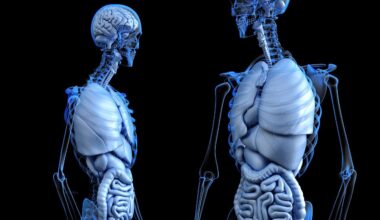The Role of Sensory Integration in Balance Recovery
Balance is an essential component of physical activities in everyday life. After an injury, the recovery of balance can significantly impact overall mobility and independence. One of the most crucial aspects to consider in balance recovery is sensory integration. This process involves the coordination between different sensory systems: vision, proprioception, and vestibular systems. They work together to help the body maintain stability. Each of these systems contributes vital information about body position and movement. For instance, vision helps in detecting surroundings and potential obstacles. Proprioception informs the brain about body part positions, while the vestibular system maintains balance. During rehabilitation, clinicians often employ techniques to retrain these sensory systems. Activities like balance exercises focus on challenging an individual’s ability to integrate sensory input effectively to regain stability after injury. This is particularly important for athletes who may suffer from balance-related injuries. Combining these approaches leads to more effective rehabilitation. Therefore, understanding sensory integration’s role in recovery can enhance therapeutic methods and accelerate the return to physical activities. Overall, it is paramount to incorporate them into recovery programs to facilitate improved rehabilitation outcomes.
In the context of balance recovery, sensory integration cannot be overstated. Individuals recovering from injuries must engage in exercises designed to challenge and improve their sensory processing capabilities. Activities such as standing on one leg while closing one eye are often used to enhance proprioception. This allows a person to improve their balance awareness. Furthermore, exercises on unstable surfaces like balance boards or foam pads can also improve vestibular and proprioceptive feedback. Such training elicits responses from the body’s various sensory systems, promoting recalibration. Additionally, visual cues can be incorporated into balance training, testing the individual’s ability to maintain balance while adapting to changes in their environment. This might include moving the head side to side while balancing, simulating real-life situations. Engaging in dual-task activities—like balancing while walking or counting—adds complexity to rehabilitation. This further enhances the ability to integrate sensory information effectively. By exploring different modalities, individuals will develop a more robust sense of balance. Ultimately, targeted balance recovery strategies focused on sensory integration allow for a quicker and more effective return to normal activities. Incorporating feedback mechanisms is vital for sustainable improvements.
Recognizing the Importance of Proprioception
Proprioception plays a key role in enhancing balance and stability after injury. It involves the body’s ability to sense its position and movements without visual input. Training proprioceptive capabilities is essential for individuals recovering from injuries to effectively rebuild their balance. Various exercises can be conducted to amplify proprioceptive feedback. These include using instability devices like balance discs or wobble boards. Implementing these forms of training can help individuals regain their awareness of body position. These unique devices promote muscular engagement and focus necessary to maintain posture. Another effective technique revolves around closed chain exercises. These movements help improve joint proprioception while simulating real-life scenarios, enhancing functional stability. Jumping exercises can also significantly enhance proprioceptive responses. The combination of strength and balance creates a fortified base, ultimately benefiting rehabilitation efforts. Engaging in sport-specific drills is particularly advantageous. This designed training can replicate scenarios athletes may face post-injury. Thus, exercises catering to their chosen sports will engage the necessary proprioceptive systems. The outcome of enhancing proprioceptive abilities leads to greater body awareness, reducing the risk of further injury. Moreover, it promotes a reconstructed foundation for active participation in anticipated activities.
The role of the vestibular system in balance recovery cannot be ignored. This sensory system is responsible for detecting motion and maintaining equilibrium, making it a critical component in rehabilitation programs. Individuals may experience vestibular dysfunction post-injury, complicating balance recovery. Rehabilitation focusing on vestibular stimulation can engage and recalibrate this vital system. Specific exercises can help improve the function of the vestibular apparatus. For example, head movements combined with balance tasks can enhance the integration between the vestibular system and other sensory systems. Additionally, gaze stabilization exercises help improve visual focus when the head is moving. Integrating such vestibular-focused activities improves functional balance during daily tasks. It ensures that individuals can effectively adapt to changes while moving. Another refinement involves adapting to varied environments, which enhances the vestibular system’s adaptability. Using tools like visual stimuli can provide additional support in vestibular training. Therefore, a multi-faceted approach is essential to ensure effective rehabilitation. Health practitioners must assess each patient’s needs to tailor vestibular exercises accordingly. This will maximize recovery outcomes and allow for the restoration of balance and coordination vital for active lifestyles.
The Integration of Visual Cues in Rehabilitation
In balance recovery, visual cues often enhance one’s recovery efforts, highlighting the collaboration between different sensory systems. Using visual stimuli during rehabilitation can improve spatial awareness, which is integral during physical activities. When combined with other exercises, such as reaching or navigating through an obstacle course, individuals can improve balance while processing visual information. Not only do these activities improve physical balance, but they also accelerate the cognitive processes involved in maintaining stability. Engaging in tasks that require visual attention fosters a better understanding of body positioning. By integrating visual elements, patients develop a stronger ability to interpret their environment effectively. Moreover, visual cues can be adjusted based on an individual’s progress. For instance, starting with a stable surface and gradually introducing unstable surfaces provides a gradual challenge. Tracking visual markers can also promote focused practice during balance activities. This ensures individuals are aware of their body in relation to the environment. Clinicians must recognize the importance of such integrations in balance recovery. Ultimately, visual stimuli can play a significant role in training the sensory systems, leading to better outcomes. Incorporating visual challenges allows for a more holistic approach in rehabilitation.
Furthermore, cognitive aspects play an intricate role in balance recovery that transcends simple physical maneuvers. When individuals heal from injury, cognitive awareness becomes crucial in their rehabilitation process. Mental engagement during balance exercises enhances overall performance. This mental aspect can take the form of active problem-solving during physical activity. For instance, incorporating decision-making tasks into exercises bridges cognitive efforts with physical rehabilitation. Such approaches can improve reactions under varying conditions which is vital for restoring balance. Activities that require thinking while balancing elicit a neurological connection that fortifies coordination between the brain and body. This is especially vital for elderly individuals, who may face further complications post-injury related to cognitive decline. Practitioners should incorporate dual-task exercises where individuals work on balance while solving simple math problems or following verbal instructions. This method effectively enhances cognitive processing during physical tasks. Reflection and assessment of the challenges faced during exercises allow for ongoing adjustments to better stabilize balance. Thus, implementing cognitive training with balance exercises fosters a holistic rehabilitation strategy and bolsters one’s ability to adapt to challenges in daily life.
Creating a Comprehensive Recovery Plan
To ensure effective balance recovery, a comprehensive plan that incorporates sensory integration is imperative. Such a plan should be tailored to address the specific needs of the individual, taking into consideration unique challenges faced during recovery. The active listing of balance goals, the modification of exercises based on progress, and regular evaluations are vital in this process. Healthcare professionals should work closely with individuals to monitor their physical and cognitive responses throughout rehabilitation. This collaborative approach encourages a deeper understanding of the recovery journey, fostering commitment and accountability. Encouraging the use of technology, such as wearable devices, can track balance improvements quantitatively. Real-time feedback provides invaluable insights for both patients and practitioners, allowing for timely adjustments to the rehabilitation program. Additionally, group therapy sessions can foster encouragement and provide motivation for those recovering from similar injuries. Peer support can significantly improve adherence to prescribed exercises and instill a sense of community. Creating a network of support not only bolsters morale but also enhances the effectiveness of the rehabilitation process. By focusing on restorative practices that include sensory integration, a stronger foundation for long-term recovery can be achieved.
In conclusion, the multi-faceted approach to balance recovery highlights the integral role of sensory integration, which spans proprioception, vision, and vestibular mechanisms. Each sensory system contributes to restoring balance after injury, supporting overall rehabilitation efforts. With increased awareness about these elements, individuals can effectively engage in rehabilitation that caters to their specific needs. Healthcare practitioners must prioritize incorporating sensory integration strategies in their therapeutic practices. This ensures that recovery is not purely physical but also cognitive, enhancing overall treatment effectiveness. Through targeted exercises, adaptive strategies, and engaging cognitive tasks, patients can strengthen their balance capabilities. The ultimate goal of rehabilitation should be to empower individuals to regain their independence while preventing further injuries. Balance recovery can significantly influence the quality of life, enabling individuals to confidently return to their daily activities. Overall, emphasizing the importance of sensory integration is foundational to the success of rehabilitation. Through structured and comprehensive recovery plans, ground will be laid for fostering lasting balance and coordination. This thorough understanding of balance recovery strategies will ensure that individuals are better prepared to navigate life, armed with a stronger sense of stability.


